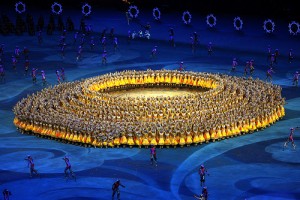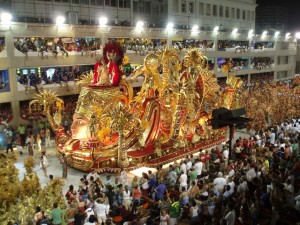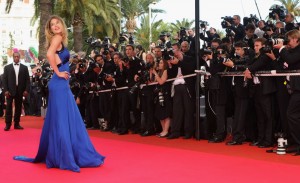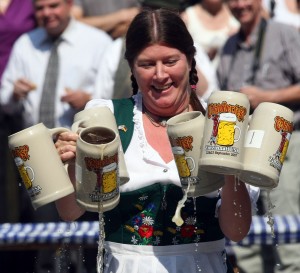There are many events, festivals, sport manifestations and happenings throughout the world. Globalization today offers any person a wide range of various events and experiences to try at all four corners of the world. A tourist and adventurer today may pick and choose from different profiles of happenings and events that they want to visit, from the world’s biggest organizations and spectacles, to local and traditional gatherings, cultural events and festivals, sports cups and matches, mass education and entertaining concerts. The events are classified according to their importance, into local, regional-zonal, national, continental-interzonal, and global (planetary), according to the number of places where the event is held (all in one place, or, in several places simultaneously), according to their character (cultural festivals, music manifestations, sports events…).
Festivals and events bring people together. The international cultural and sports events today make considerable contribution to the popularity of a city, country and the development of a nation’s cultural awareness. There are events which periodically move from country to country, and those which are traditionally held at the original locality, which is exactly why they become unique and popular. Motivation to participate in events is created by the need of social interactions allowing for the research and establishment of numerous contacts and relations, exchange of experience and ever different perception of the experiences within a group.
 Olympic Games – Four billion people in “one place”
Olympic Games – Four billion people in “one place”
The number of people deployed in the course of the event: around 3000
The Olympic Games are a major international event featuring summer and winter sports, in which thousands of athletes participate in a variety of competitions. The Games are currently held every two years in even-numbered years, with Summer and Winter Olympic Games alternating, although they occur every four years within their respective seasonal games. Originally, the ancient Olympic Games were held in Olympia, Greece, from the 8th century BC to the 5th century AD. Baron Pierre de Coubertin founded the International Olympic Committee (IOC) in 1894. There are over 13,000 athletes that compete at the Summer and Winter Olympics in 33 different sports and nearly 400 events. The first, second, and third place finishers in each event receive gold, silver or bronze Olympic medals, respectively.
The Games have grown in scale to the point that nearly every nation is represented. The Games also constitute a major opportunity for the host city and country to promote and showcase themselves to the world.
The Olympic symbol, better known as the Olympic rings, consists of five intertwined rings and represents the unity of the five inhabited continents (considering North and South America as a single continent). The colored version of the rings—blue, yellow, black, green, and red—over a white field forms the Olympic flag. These colors were chosen because every nation had at least one of them on its national flag. The Olympic motto is Citius, Altius, Fortius, a Latin expression meaning “Faster, Higher, Stronger”. Coubertin’s ideals are further expressed in the Olympic creed:
The most important thing in the Olympic Games is not to win but to take part, just as the most important thing in life is not the triumph but the struggle. The essential thing is not to have conquered but to have fought well.
The host city for an Olympic Games is usually chosen seven years ahead of their celebration. By 2016, the Olympic Games will have been hosted by 44 cities in 23 countries, but by cities outside Europe and North America on only eight occasions. The 2016 Games in Rio de Janeiro will be the first for a South American country. The countries that sent the most athletes to the 2008 Summer Olympics are China with 639, the United States with 596, and Russia who brought 455 athletes.
 The Carnival of Brazil – One of a kind event
The Carnival of Brazil – One of a kind event
The Carnival of Brazil, properly spelled “Carnaval” in Portuguese, is an annual festival in Brazil held forty days before Easter. Rhythm, participation, and costumes vary from one region of Brazil to another. Carnival is the most famous holiday in Brazil and has become an event of huge proportions. The country stops completely for almost a week and festivities are intense, day and night, mainly in coastal cities. The consumption of beer accounts for 80% of annual consumption and tourism receives 70% of annual visitors.
The Rio festival in Brazil is by far the best known and the largest festival in the world. Every year hundreds of thousands of people take part in this beautiful and one of a kind event. The carnival takes place in the Sambadrome, a huge high-tech stadium, a symbol of the modern era in Brazil. This is the place where samba schools compete with each other for the best dance show and costumes. Seeing the whole crowd dancing in the rhythm of high energy, Latin music is unbelievable experience.
Blocos parade (Blocos – pageant groups that paraded through city avenues in late 19th century) are organized in nearly every neighborhood, but the most famous ones parade in Copacabana, Ipanema, Leblon, Lagoa, Jardim Botânico, and in downtown Rio. Organizers often compose their own music themes that are added to the performance and singing of classic “marchinhas” and samba popular songs.
Carnival time in Rio is a very interesting, but is also the most expensive time to visit Rio. Hotel rooms and other lodgings can be up to 4 times more expensive than the regular rates. There are big crowds at some locations and life is far from ordinary in many parts of town.
Despite the fact that this is highly priced form of entertainment it is for sure worthy its price. If you haven’t seen the Rio festival in Brazil you haven’t seen any festival at all.
 The CANNES FESTIVAL – Because cinema itself is constantly changing the boundaries
The CANNES FESTIVAL – Because cinema itself is constantly changing the boundaries
The number of people deployed in the course of the event: around 1200
The Festival de Cannes has celebrated the cinema for more than 60 years. Over the years, the French Association of the International Film Festival has been able to evolve whilst retaining the essential: the passion for motion pictures, discovery of new talents, and enthusiasm of festival-goers and professionals from around the world, all contributing to the birth and distribution of films.
The Festival de Cannes has always been the reflection of its era – a centre for all cultures and hopes, a spring of effervescence and, above all, transmission. Defining ambitious and different projects, giving the possibility to budding filmmakers to emerge. A showcase of talents with respect of all tastes.
Today, it draws more than 10,000 buyers and sellers from around the world. The Village international was created in 2000 around the Palais des Festivals to enable numerous countries to support their producers and film industry. The Producers Network, which has since 2004 enabled producers from around the globe to come together on their projects. The same year, the Short Film Corner, a welcome and promotional platform for shorts, was created.
“Because cinema itself is constantly changing the boundaries, because the world it reflects is more indiscernible than ever, the Festival will not simply coast along on the prestige of its name, however strong that may be. This prestige is above all due to the quality of the films, the creativity of the artists, the fighting spirit of the professionals and the enthusiasm of the press. Cannes is a collective good that each of us, wherever we are and in our own individual way, builds stone by stone, year after year. It’s through never ceasing to question, through constantly evolving, and through inviting criticism, that we do it the most good” – Thierry Frémaux.
 Oktoberfest – the largest festival in which there is no thirsty people
Oktoberfest – the largest festival in which there is no thirsty people
A Beer Festival is an organized event during which a variety of beers (and often other alcoholic drinks) is available for tasting and purchase. Beer festivals are held in a number of countries. The largest beer festival in the world is Oktoberfest in Germany.
Oktoberfest is a 16-day festival held each year in Munich, Bavaria, Germany, running from late September to early October. It is one of the most famous events in Germany and the world’s largest fair, with some six million people attending every year, and is an important part of Bavarian culture. Other cities across the world also hold Oktoberfest celebrations, modeled after the Munich event.
The festival is held on an area named the Theresienwiese (field, or meadow, of Therese), often called d’ Wiesn for short. It began with the Royal Wedding on 12 October 1810. Crown Prince Ludwig, later to become King Ludwig I, was married to Princess Therese of Saxony-Hildburghausen on 12 October 1810. The citizens of Munich were invited to attend the festivities held on the fields in front of the city gates to celebrate the happy royal event. The fields were renamed Theresienwiese (“Theresa Fields”) to honor the Crown Princess, although the locals have since abbreviated the name simply to “Wiesn”. Horse races in the presence of the royal family marked the close of the event that was celebrated as a festival for the whole of Bavaria. The decision to repeat the horse races in subsequest years gave rise to the tradition of Oktoberfest.
Oktoberfest isn’t just for Germans anymore. Today, the Oktoberfest in Munich is the largest festival in the world, with an international flavor characteristic of the 20th century.
Visitors eat huge amounts of traditional hearty fare such as Hendl (chicken), Schweinsbraten (roast pork), Haxn (knuckle of pork), Steckerlfisch (grilled fish on a stick), Würstl (sausages) along with Brezn (Pretzel), Knödeln (potato or bread dumplings), Kaasspotzn (cheese noodles), Reiberdatschi (potato pancakes), Sauerkraut or Blaukraut (red cabbage) along with such Bavarian delicacies as Obatzda (a fatty, spiced cheese-butter concoction) and Weisswurst (a white sausage).





































 Srpski
Srpski English
English